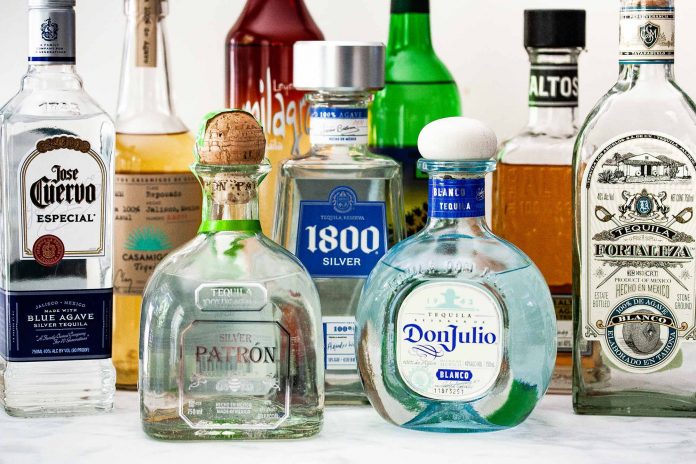Since tequila, a popular Mexican beverage, has been around for centuries, there have been plenty of opportunities for tall tales to emerge. The spirit of the agave has weathered the test of time.
Despite its common connection with provocateurs like salt and lime or, in the 1970s, one-hit wonders like the Sunrise, it is as valued among skilled bartenders as bourbon and scotch.
Even George Clooney contributed his funds to the introduction of a product line. Additionally, like bourbon, more formally referred to as America’s Native Spirit, distillers are subject to a rigid system of regulations. These include ensuring that each bottle is produced in the appropriate area with the proper components and that reposado and aejo versions are matured for the right duration.
But as the saying goes, neither Rome nor Tequila, Jalisco, was constructed in a day, much alone a thousand years.
Table of Contents
The Aztecs Ferment Agave
It wasn’t initially the partygoer’s preferred shot. As we know it now wasn’t even its original form. Pulque, a fermented beverage made from agave plant sap, was cherished by the Aztecs. The milky substance was so significant to an Aztec culture that they worshipped two deities associated with alcohol. The first was Mayahuel, the maguey goddess, and the second was Patecatl, her spouse, and the pulque deity.
Although pulque was first recorded in writing around 200 A.D.—on stone walls, the drink didn’t take off until the Aztecs had a surprise visit from the Spanish.
The Spanish Distill Agave
While many stories about how agave distillation started, one popular one includes the Spanish conquest and prehistoric mud stills. To avoid going too long without brandy, the parched Spaniards improvised with mud and agave as supplies started to run low, producing what is now known as mezcal. (Keep in mind that while theoretically, all mezcals are tequilas, not all mezcals are tequilas.)
After the Spanish government established a trade network between Manila and Mexico in the fifteenth century, the Marquis of Altamira built the first sizable distillery in it, Jalisco, in the early sixteen hundreds.
Modern One is Born
After the Sauza family (and, we’re sure, a few other tiny producers in between) started professionally distilling it in 1873, the Cuervo family, who everyone now knows and loves, did so 1758. By this time, the distilleries were probably producing what we today know as tequila. According to Salon, Don Cenobio Sauza was the one who determined that blue agave was the best for making tequila.
The Margarita is Invented
Tequila found a home among American scofflaws during Prohibition, just like rye whisky from Canada. Drinkers in the U.S. started utilizing Mexico’s sweet agave nectar due to their inability to obtain more than bad whiskey and bathtub gin, as well as the more than 100 bars in Tijuana that were simple to get to and stocked with alcohol.
By the time 1936 arrived, drinking was once more permitted in the United States, thus, traveling to Mexico to have fun was no longer necessary. However, an Irishman named Madden, well-known in the area for his Daisy, ran one of the last pubs in Tijuana. James Graham, a newspaperman, and his wife ended up during their trip there.
Despite Madden’s admission that the drink’s invention was a happy accident, it has grown to be the most well-known in the United States (margarita in Spanish means daisy). When was the last moment you didn’t have one in Cinco de Mayo? (Presuming you observe those oddly American-sounding Mexican holidays.)
“Tequila” Becomes the Intellectual Property of Mexico
The Mexican government designated the word “tequila” to be its intellectual property to claim ownership of it. It made it necessary for tequila production in specific regions of Mexico. Also, it prohibited the production and export of “tequila” from other nations. To guarantee quality and advance the culture around the spirit, the Tequila Regulatory Council was also present.
Bartending’s Love Affair with Agave
Bartenders worldwide are taming the humble agave nectar into drinks other than plain Margaritas and Sunrises, starting with the basic pulque and continuing with today’s craft tequilas. Phil Ward created Mayahuel in 2009 to celebrate the great tequila and mezcal currently offered in the United States. The establishment promoted the use of tequila in traditional cocktails like the Oaxaca Old Fashioned.
Since then, several notable bars have opened nationwide, notably 400 Rabbits in Austin, Texas. Ivy Mix, who received this year’s Best American Bartender award at Tales of the Cocktail, most recently established Leyenda, a Mexican-themed bar serving its drinks that would have the Olmecs raising a glass in awe.
More Information
For some people, it has varied connotations. It can be present in numerous settings. Whether you want it plain, shot with lime, in a Margarita, or on the beach, it is present.
The agave plant is for making this distilled beverage. It is for the state of Jalisco by Mexican law. It must have 35 and 55 percent alcohol by volume (ABV). The drink must have an ABV of at least 40% to sell in the United States. In the U.S., its popular brands include Jose Cuervo, Patron, and Don Julio.
Production
The sugars in the blue agave plant are for making it. Cooking the plant’s core makes it possible to extract the sugars, ferment, distill, and occasionally age. In general, the one produced from agave plants grown in Jalisco’s highlands tastes sweeter and fruitier than tequila produced from lowland plants, which taste more earthy. The length of time it spends in the barrel affects its color intensity. It also impacts how strongly it tastes of wood or oak.
Also Read: How To Spark Your Interest With Airfood Recipes
What To Combine Tequila With?
Its connoisseurs frequently have differing views on how to consume Mexican liquor properly. It is a simple liquor to enjoy in various settings, whether you want it plain, shot with lime, in a Margarita, or on the beach. Make yourself a Spicy Blood Orange Margarita if you want something hot. Try the Blue Agave Sour instead if you wish for tropical flavors. It is all about Tequila and its details!










